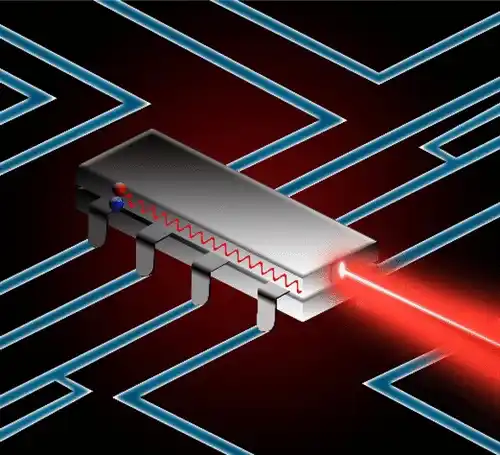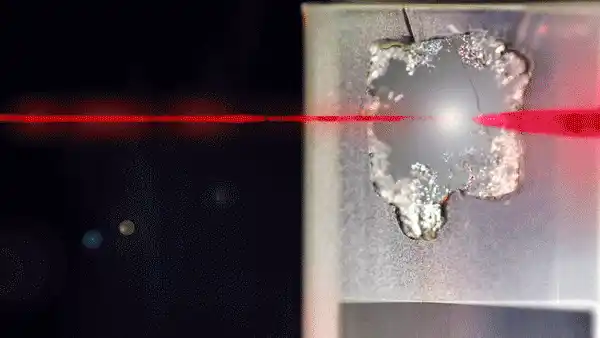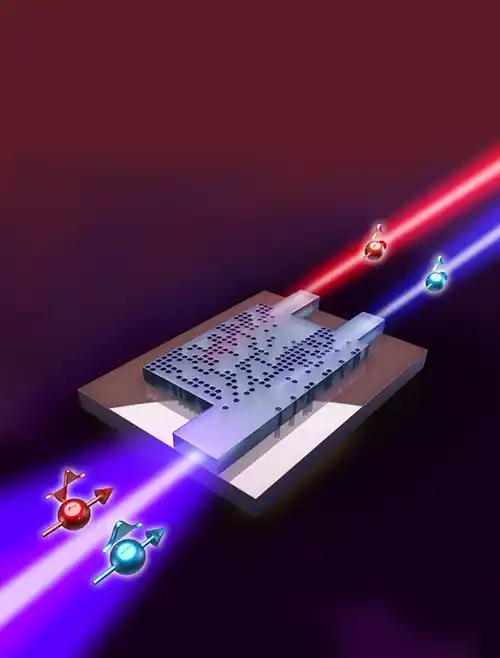افشین رشید
اُستادیار ؛ عضو هیات علمی دانشگاه آزاد اسلامی واحد علوم و تحقیقات تهران
621 یادداشت منتشر شده_ Industrial Electronics and Nanolasers Department Investigation of Coherence in industrial Nanolaser Light (Coherence Radiation)n

Note: The characteristic of the light emitted from a nano laser is its "coherence", due to which the energy loss of the beam from a nano laser is less than that from a lamp. Coherence means that the nano laser waves move at the same frequency and phase, and as a result, there is no phase difference between the waves. Thus, its beam will be very powerful.
Coherence is a physical property of waves. In physics, two wave sources are completely coherent if they both have the same phase difference. This is an ideal property of waves that causes standing interference (a standing wave is produced). This property measures the power of waves to interfere with each other. If we divide the light coming from a source into two parts in some way and create a new source with each of them, so-called two secondary sources are created from a primary source. Any (random) change in phase that occurs in one of them is exactly repeated in the other, hence the phase of the secondary sources remains constant. Two sources that are thus derived from a primary source and have a constant phase relationship are coherent, and the light waves produced from them are called coherent waves.

For a nanolaser light wave to be coherent, two conditions must be met. The resulting wave must be very nearly single-frequency. That is, the frequency dispersion must be small with a small linewidth. And the wavefront must have a specific shape, such that it does not change with time. A wavefront is a surface composed of points with the same phase. A point light source produces a wave whose phase is constant at equal distances from the source. Depending on the coherence conditions, two types of coherence are conceivable.
_Time coherence
_Spatial coherence

Temporal coherence
In the coherence condition, we stated the first condition of coherence as being a single frequency of the wave. If this condition holds, then the coherence is called temporal coherence. Temporal coherence means that the relative phases between two points in time must be constant over a relatively long time interval. Thus, with temporal coherence, it is possible to predict the phase and amplitude after a known time interval between the initial and final evidence. If this prediction process can be repeated some time later, then it is said that temporal coherence exists with a magnitude equal to the intervals of the predictions.

Spatial coherence
The first condition for coherence is that the shape of the wavefront does not change with time. If this condition is met, the resulting light is said to be spatially coherent. In other words, a time-coherent wave is said to be spatially coherent if there is a constant phase difference between any two selected points on the wavefront. The term constant implies a sufficient time to perform an operation on the wavefront, such as visual observation or photography . In other words, spatial coherence requires that the relative phases between two spatial points remain constant over a relatively long time interval. In each of these cases, the longer the time interval, the greater the coherence. For a light source to be perfectly coherent, it must also be spatially coherent in addition to being temporally coherent.
Conclusion :
The characteristic of the light emitted from a nano laser is its "coherence", due to which the energy loss of the beam from a nano laser is less than that from a lamp. Coherence means that the nano laser waves move at the same frequency and phase, and as a result, there is no phase difference between the waves. Thus, its beam will be very powerful.